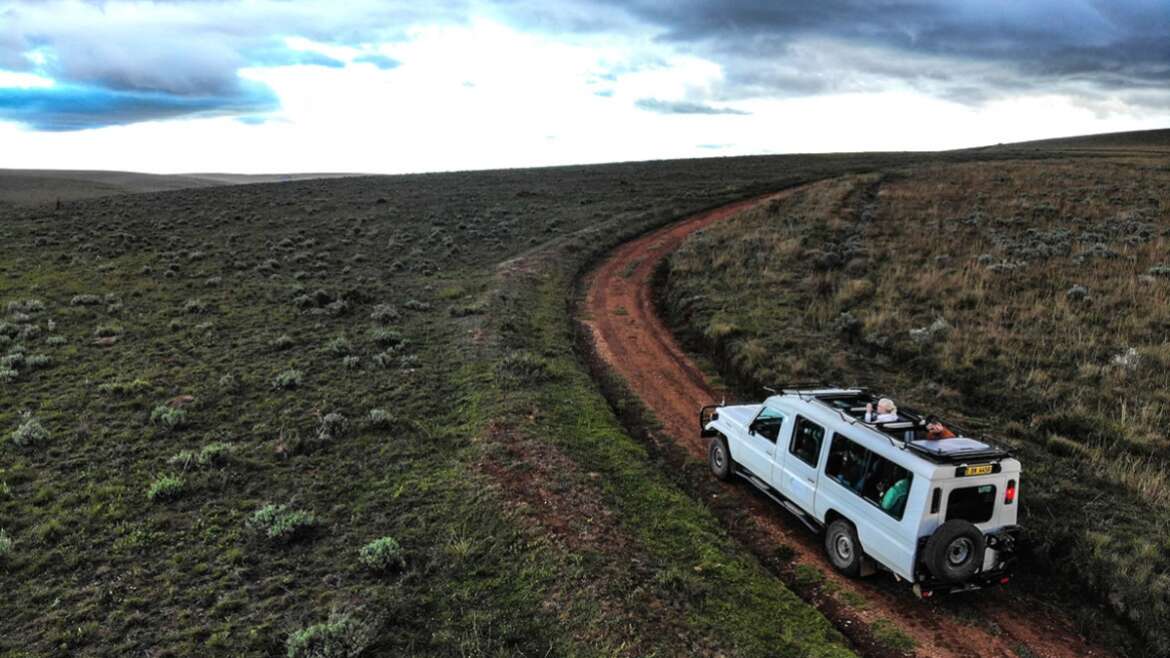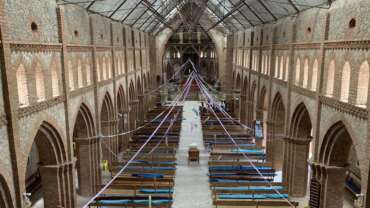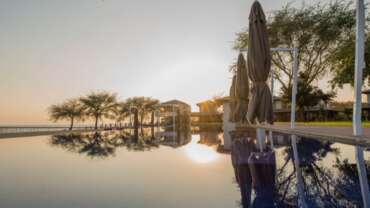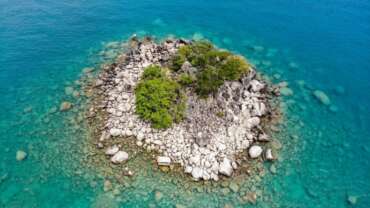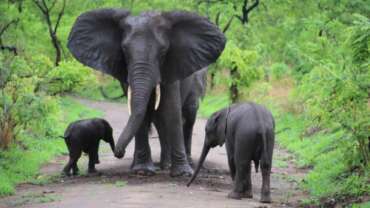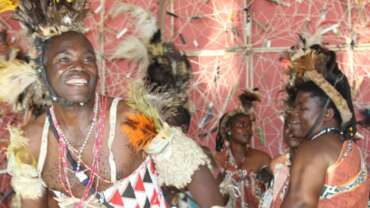Tourist Activities of Malawi
Bird Watching
Malawi has about 650 bird species that tourists enjoy such as .. White-winged Babbling Starling; Olive-headed Weaver; Shelly’s Sunbird; Orange-winged Pytilia; Souza’s Shrike; Lesser Seedcracker; Hildebrandt’s Spurfowl; Stierling’s Woodpecker; Rwenzori Nightjar; White-chested Alethe; African Hill Babbler; Bertrand’s Weaver; Ludwig’s Double-collared Sunbird; Blue Swallow; Wattled Crane; Olive-flanked Robin Chat;
Mountain Illiadopsis; Oriole Finch,Green-headed Oriole; White-winged Apalis; Yellow-throated Apalis; Malawi Batis; Bar-tailed Trogon; Brown-breasted Barbet; Southern Citril; Spotted Ground Thrush; Southern Mountain Greenbul; Speckle-throated Woodpecker. Bird watching can be enjoyed at :- Chintheche Inn. Owned and managed by Wilderness Safaris, is a relaxed beach lodge on the western shore of Lake Malawi, Africa’s third-largest lake. This northern part of the Malawi lakeshore is very green and lush, dotted with fishing villages and with endless sandy beaches.
Lilongwe Nature Sanctuary – a highlight on a birdwatching break in Malawi. There are opportunities to see the olive sunbird and the red-throated twin spot Zomba Plateau- This area is located in the southern part of Malawi; you can watch interesting Montagne species in its forests. Mumbo Island Campis a small sustainable eco-camp located on Mumbo Island. Nature walks and kayak trips around Mumbo Island are great addition to a birdwatching break in Malawi.
From the tiny and colourful paradise flycatcher to the large African harrier hawk as well as the Fish eagle, there is a great range of birds to be seen here. Liwonde National Park – This national park offers a great experience when it comes to bird watching. Various types of bird species can be seen in this lush Malawi reserve at Mvuu Camp. Other Significant birdwatching spots include: Viphya Plateau; Dzalanyama Forest Reserve; Kasungu National Park; Nyika National park; Vwaza Marsh Wildlife Reserve; Misuku Hills, Mount Soche; Mount Mulanj Lengwe National Park; Nkhotakota Wildlife Reserve.
Game Drives
Malawi is well known for game drives, some of the places to enjoy it are as follows…
Majete Wildlife Reserve
Proclaimed in 1955 as fast becoming one of the most beautiful parks in Malawi, where in 2003 it took on a new lease of life and become a Big Five reserve. Located southwest of Blantyre in the Lower Shire Valley in southern Malawi.
It offers a wide variety of activities, including elephant tracking, and visitors can also learn about the culture around Majete and visit a local village.
The Reserve has boosted the animal stocks considerably such as Black Rhino, Elephant, Buffalo, Zebra, Hartebeest and many antelope species including Kudu and Roan can be found here. Another major attraction of Majete is the Kapichira Falls, with stunning views and rock formations worn and created over thousands of years.
Nyika National Park
Largest and oldest National Park in Malawi. It has a unique plateau, which is perfect for game drives and horseback safaris, as well as walks through the short grass. One of the most popular ways to see the region is to set out on a ten day Malawi Horse Safari. Nyika Plateau has streams and dams stocked with trout and visitors can enjoy fishing, see waterfalls and even take a trip to a magic lake. While the park is not home to the Big Five, animals such as Eland, Zebra, Roan, Waterbuck and smaller antelope as well can be seen.
Nyika National Park has the highest concentration of Leopard in Central Africa. Elephant and Rhino live on the lower ground. On night drives various animals can be seen, including Hyena, Jackal and Owls or maybe even a shy Leopard. There is a small airstrip near Chelinda Camp for access by air, otherwise the drive from Rumphi is uncomplicated and a 4×4 vehicle is a must during the rainy season.
Liwonde National Park
Located in the south of Malawi with the Shire River on its border, Liwonde National Park is considered to be Malawi’s premier park. This Malawi National Park has fabulous scenery and is well managed. Animal stocks include large numbers of interesting animals such as a Hippos and Crocodiles, herds (in their hundreds) of Elephant, Zebra and other antelope which come down to the water to drink. There are only 2 types of accommodation in Liwonde National Park, camps and lodges. Visitors should be aware that Hippos often come up onto the lawns to feed at night. Expert guides take visitors on guided walks, boat trips and also night drives. The guides are extremely knowledgeable and their bush lore is fascinating, as they give guests an insight into the lives of many animals.
However, arriving by boat is the way to go, visitors can park near the jetty on the opposite side, raise the red flag provided and staff from the camp will come across the water to make the transfer.
Lake Malawi National Park
The Lake Malawi National Park incorporates the beautiful Cape Maclear, a World Heritage Site. The park lies in the south of the country, and is the world’s first freshwater park. It includes the land area around the cape and bay, as well as the Lake and islands as far as 100m offshore. These waters are an absolute delight for snorkeling enthusiasts. There is also boating and canoeing on offer. There are 600 species of the colourful Malawi Cichlids, which are endemic here. This diversity of freshwater fish is unequalled in the entire world. The abundant freshwater fish will feed directly from your hand while snorkeling in Lake Malawi.
In the surrounding areas, various animals and birds can be found, There are a number of excellent places to stay, all of which offer many exciting activities. There are even some beautiful romantic island hideaways.
Kasungu National Park
Kasungu is Malawi’s second largest National Park after Nyika and is located in the central region of the country. The landscape covers 2 000km and consists of woodland and bush, grassland and rolling hills, with a small lake and a wide marshy river course. Hippos are established at the lake and some Elephants remained after serious poaching.
Buffalo, Zebra, Leopard, Jackal and antelope are available to spice visitors experience in addition to a wide variety of birds. Due to recent efforts, animal stocks and the accessibility of the Park have been improved, and it can now be toured in regular vehicles. There is a lodge in the Park offering game drives and guided walks. Kasungu is only 160km (100 miles) from Lilongwe. The park also has many important Iron Age archaeological sites.
Vwaza Marsh Game Reserve
The government camp here closed down in 2007, and this may be the reason the reserve is not more popular, but it is a rewarding experience because of the stunning scenery and high concentration of game. There are private lodges nearby where guests can stay. This reserve lies in the north of the country on the Zambian border, and is a backpacker’s delight. It is very accessible from Rumphi by car or public transport. There are wonderful walks around Lake Kazuni (you must be accompanied by a game ranger) as well as 4×4 trails around the reserve. Animals resident around the lake include: many Hippos, Elephant and Buffalo. Many other smaller animals can also be seen, and the birdlife is excellent, with around 300 species recorded in the reserve.
Lengwe National Park
Situated in the southern part of Malawi, 75km from Blantyre, this is the most southern of all the parks. This area is ideal for sugar cane production and much of the surrounding area has been taken over by plantations. The Park has wonderful scenery; the waterholes are great places to spend some time bird watching and also taking walks in the bush. The park has large herds of Nyala as well as many smaller antelope. Baboons, Leopard and Hyena also reside here but are seen less often. There is only one place to stay in the reserve Nyala Safari Lodge.
Nkhotakota Game Reserve
Located in the central region, this is the largest game reserve in Malawi. But excellent walking safaris are possible with the services of a ranger or guide. There are plans to improve the facilities and game management, which in the past have been left to their own devices. Currently facilities in the reserve are limited to camping, but lodges along Lake Malawi shore offer accommodation and can organize day trips into the reserve.
Scuba Diving
Lake Malawi is recognized as one of the best freshwater diving locations in the world. It is the Centre of this activity because of its clear, calm, warm, shark –free waters with an abundant fish population. Tourists enjoy visibility in the months of November to December up to 30m.To increase the participation of local people towards this activity, there is established dive school in Nkhata Bay and another school on Likoma island.
Lake Malawi is recognized as one of the best freshwater diving locations in the world. It is the Centre of this activity because of its clear, calm, warm, shark –free waters with an abundant fish population. Tourists enjoy visibility in the months of November to December up to 30m.To increase the participation of local people towards this activity, there is established dive school in Nkhata Bay and another school on Likoma island.
Hiking
Generally done in the cool, shady forests on the hills and plateau in the morning to afternoon.
Places where hiking is offered:-
01 Mount Mulanje
This is Malawi’s very own ‘mountain in the sky’, there is a large area that can be covered on foot and Mulanje Mountain has a network of huts for intrepid explorers to stay in. Marked paths offer a variety of routes and guides and/or porters can be hired which are always available at the foot of the mountain.
02 Nyika Plateau
Though less rugged, but walking at Nyika Plateau is undeniably one of the best ways to explore this unique and wildlife-rich wilderness. There are marked trails for those ready to hike and camp for a few days. They cover the various peaks and valleys whilst offering chances to encounter the animals in the park close at hand.
03 Zomba Plateau
Its serene forests, hills and streams as well as the views from it, offer another attraction for walkers. Unlike other places, there are roads up to the plateau, and the unique features are that, the terrain is generally softer and gentler, with fewer and lower peaks. It’s an excellent place for rambling and hiking, with a number of easily followed roads and trails. The plateau contains pine plantations as well as rolling grassland, montane forest, scrub and woodland.
04 Dedza
The area around Dedza town, which lies between Lilongwe and Blantyre, contains several forest reserves which are well worth exploring, including Dedza Mountain, Chongoni and Mua-Livulezi. The main peak is Nkhoma Mountain (1,784m) which lies to the east of the main Lilongwe-Dedza road. The highland climate makes the area particularly pleasant in the hot season.
05 Dzalanyama and Ntchisi
Dzalanyama and Ntchisi are the forest reserves that also provide pleasant walks through shady environments, usually with excellent birdlife.
Cultural Activities
01 Dances
Malawians have a wide variety of traditional dances which spice up their way of life. There are over 70 traditional dances and three of these namely: Vimbuza, Gule Wa Mkulu and Tchopa, have been proclaimed by UNESCO as Masterpieces of Oral and Intangible Heritage of Humanity. Among other dances include :- Chisamba by the Chewa, Uyeni by the Ngoni, Chilimika by the Tonga and Likhuba by the Sena
02 Arts and Crafts
Craftsmen weaving and selling beautiful rattan-type furniture and other crafts can be found on most main roads. But a visit to the popular Kungoni Centre for Art and Culture is highly recommended. This is located 80 kilometres south of Salima on the M5, houses the Chamare, a living cultural museum. Some of the works of the craftmen at Mua is found at the Vatican, Buckingham Palace and other palaces around the world. Other pieces of art can be found at Nkhotakota and Dedza Potteries; and in all cities and towns.
03 Cultural Places to Visit
A lot of Lodges surrounded by communities offer cultural tours to the nearby villages. Apart from cultural tours provided by accommodation sites, some of the cultural places one can visit whilst in Malawi.
Blantyre, has the original mission stations and centres of excellence for handicrafts and also the Society of Malawi Situated in Mandala House, the society protects preserves records of the country’s history.
Zomba and Mangochi have a number of historical buildings, monuments and museums.
Nkhotakota is of historical significance and has a renowned pottery
Karonga is the site of an interesting historical and archaeological museum
Monkey Bay/ Nkhata Bay/ Nkhotakota shows the link between missionaries, with sites of the Livingstonia Missionmarked by graves at Cape Maclear and Bandawe, near Chintheche, before it reached its final and current location near Chitimba in the north.
Likoma Island has the magnificent missionary built Cathedral, St. Peter’s Cathedral, the same size as Winchester’s!
Dedza has a lot to offer from the Chongoni Rock Artarea, a UNESCO World Heritage Site, the Dedza Pottery, where artists and craftsmen can be viewed producing a variety of items that are found all round Malawi and sold for export, as well as the Mua Mission which showcases Malawian culture through the cultural museum, traditional dances and other artistic skills.
Thyolo has the tea estates with fascinating colonial histories.
Lilongwe, one can visit the historical war memorial tower and Kamuzu mausoleum.
04 Popular Cultural Events
Malawi has a rich cultural heritage. Much of its culture has deep tribal roots, while some of its newer events and festivals are truly national in scope and importance. As a way of preserving heritage, groupings have been formed and they include
Chewa Heritage Foundation,
Karonga-Chitipa Cultural Heritage,
Mang’anja Heritage Foundation Mulhakho wa Alhomwe,
Mzimba Heritage Association ,
Ndamo sya Ayao,
Umhlangano wa Maseko and
Uraha Foundation
05 Museums and Monuments
Public museums were established through an Ordinance in May, 1957.
The Nyasaland Society (now called Society of Malawi) was instrumental to its establishment. In 2017, the Department of Museums and Monuments was created by government which brought together the former Museums of Malawi and the former Department of Antiquities. Currently, it is this department that runs museums in the country.
Top Mandala Museum
It was the first public museum and 2009 was organized in a two storey building known as the “OLD MANDALA MESS”, Leased from the African Lakes Corporation (Mandala). It opened its doors in July, 1960.
Exhibition theme was a ‘general’ one based on displays of natural history, ethnography, history and archaeology. -It was opened to the public in July 1960.
Chichiri Museum
This was the first purpose built museum building constructed at Chichiri Hill in Blantyre in 1965.
Officially opened in June 1966 and has one main exhibition hall where displays of natural history, ethnography, history and archaeology are exhibited.
It also features open air exhibits among which are a traditional hut (ndiwula), Iron ore Smelting Furnace and a collection of engines and relics built around 1890’s.
It is the main centre for cultural activities.
Lake Malawi Museum
This museum was established by the Society of Malawi in old Gymkhana Club in 1971.
It was eventually handed over to the Museum Trustees in 1976
This made the name of Museum of Malawi change to pluralism hence Museums of Malawi as the establishment was then called.
Exhibition theme for this museum is ‘’The people of the Lake and Their Environment”.
It is divided into four section: The natural history section, the history, archaeology and ethnography, Lake Malawi steamer transport and the aquarium.
Very outstanding on its display is a dummy of the Guendolen gunboat. The gun boat displays original navigation equipment. It began operations in 1899.It is famous because in first world war on 13th August,1914 when it put out of action the German gunboat, Herman Von Wissmann on Lake Nyasa. News of this unprecedented event reached England during the early days of German advance into France and was headlined in the Times as “Naval history on Lake Nyasa.”
Mtengatenga Postal Hut Museum
This museum was restored from an old postal rest hut and organized into a functional wayside museum to depict the development of early postal services in Malawi.
The hut is situated at Namaka in Chiradzulu District, along the Chilembwe Highway midway between Blantyre and Zomba.
Before 1941, mail services in Malawi (Nyasaland that time) were carried out from one point to another on foot. The hut served as a rest hut as well as an exchange point for mail carriers operating between Blantyre and Zomba since Namaka was nearly the midpoint between Blantyre and Zomba approximately 70 kilometers apart.
The history of the hut has been of great interest to the local community who call the place “Mtokoma”.
Mzuzu Regional Museum
This museum was first organized in rented premises of Chenda Mkandawire in the City of Mzuzu. It was later relocated to MPICO Building. Currently, the museum is in the IK Enterprises next to the Northern Region Government Building Complex, but the exhibition is yet to be mounted.
The project to set up this Museum began in 1985 and received financial assistance from the Canadian High Commission. The Museum was opened to the public (unofficially) in September 1990.
Exhibition theme is “Northern Malawi, The People and the Land”.
Karonga Museum
CultureMuseum Centre Karonga(CMCK) Museum is modelled on the public-private partnership between the Government of Malawi through the Department of Museums and Monuments and the Uraha Foundation Malawi, which was facilitated through donors such as European Union, GTZ, Press Trust and Uraha Foundation Germany.
CMCK is supported by the Town and District Council of Karonga, the chiefs and the people of Karonga district.
The Centre’s mission is to preserve and promote Karonga’s natural and cultural heritage.
The Exhibition theme is “From stone age to democracy”.
It houses fossils of Dinosaurs and early human and pre-historic remains which provide an insight into human origins and history of life on earth.
Biking
Malawi’s varied terrain, make it a great country for biking. More challenging mountain biking is provided in the forests and on the plateaux. Most of the lodges in the forested highlands offer mountain bikes for hire and there is an increasing number of trails to explore. Mountain biking can be enjoyed at the following spaces:
01 The Luwawa Forest
The Luwawa Forest area is known for hosting its annual international mountain bike race in June, where passionate cyclists from across the globe come to the country to partake in their favorite activity.
02 Nyika National Park
Nyika National Park is another great biking destination in Malawi and during the visit to the park, consider staying at Chelinda Camp, there is a reasonable accommodation that is popular among cyclists and offers cycling tours.
03 Blantyre
Blantyre, Malawi’s busiest city, has its fair share of cycling routes, going through both the concrete jungle and dense forests. Several cycling tours are offered in Blantyre where guests can be taken to a remote wilderness to go on a biking expedition led by a skilled guide. Planning a cycling trip around Blantyre means you won’t have to venture far after landing in its airport for an adventure, and there’s more accommodations to choose from if you decide to stay in the city instead of the countryside.
Other significant places for biking include; Zomba, Viphya, and Ntchisi.



